University of Cambridge
Type of resources
Topics
Keywords
Contact for the resource
Provided by
Years
Formats
Representation types
Update frequencies
-
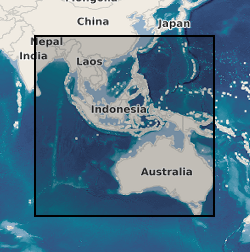
Paired water and river sediment samples were collected from Vietnam Australia, Cambodia and Nepal. Waters were analysed for major ions, Sr isotopes and Mg isotopes. Sediments were sequentially extracted using ammonium chloride, acetic acid and hydrochloric acid to target exchangeable ions, calcite and dolomite respectively. They were analysed for major ions and selected isotopes.
-
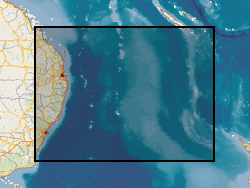
Elastic thickness data for Tasmantid Seamounts determined from gravity modelling. Published paper, Richards, Fred & Kalnins, Lara & Watts, A. & Cohen, Benjamin & Beaman, Robin. (2018). The Morphology of the Tasmantid Seamounts: Interactions Between Tectonic Inheritance and Magmatic Evolution. Geochemistry, Geophysics, Geosystems. 10.1029/2018GC007821.
-
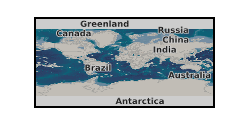
Micro CT scans and associated documents (3d files, animations, segmentation files, data files etc) of palaeontological material.
-

Primary data, model initial conditions, model results, a compiled database of olivine diffusivity experiments and supplementary tables used in the paper: 'Mutch, E. J. F., Maclennan J., Shorttle, O., Edmonds, M. & Rudge, J. F., (2019), Rapid trans-crustal magma movement under Iceland, Nature Geoscience'. Data_S1 contains electron probe microanalysis (EPMA) profile data of olivine crystals used in this study. This file also includes all of the initial conditions for forsterite content (XFo), Ni and Mn used in the diffusion modelling. Standard deviations are averaged values of standard deviations from counting statistics and repeat measurements of secondary standards. Data_S2 is a compiled database of olivine diffusion experiments used to derive multiple linear regressions for diffusion coefficients and associated covariance matrices. Regressions were only made through [001] data. Data_S3 contains median values for all of the inverted parameters estimated for each crystal profile from the Nested Sampling Bayesian inversion for each type of initial condition and model equation. All of the Monte Carlo realisations for each model are also included in this file. Table_S1 is a supplementary table that contains olivine diffusion equation regression parameters derived and used as part of this study. Table_S2 is a supplementary table that contains covariance matrices for olivine diffusion equations derived in this study. Table_S3 is a supplementary table that contains covariance matrices for aSiO2 (silica activity) dependent olivine diffusion equations derived in this study. Table_S4 is a supplementary table that contains angles between the EPMA profile and the main crystallographic axes in olivine as measured by EBSD. These angles are incorporated into the anisotropy calculation used to determine the apparent diffusivity parallel to the measured profile. angle100P, angle010P and angle001P are the angles between the profile and [100], [010] and [001] respectively. Table_S5 is a supplementary table that contains ,median timescales and 1 sigma errors obtained from the posterior distributions of the Nested Sampling Bayesian inversion conducted on each olivine profile. The results using Al-based initial conditions, constant initial conditions (diffusion only), and aSiO2 based equations using Al-based initial conditions are presented here. The classification of each profile (growth-dominated vs. Al-decoupled) is also shown. See paper (Mutch, E. J. F., Maclennan J., Shorttle, O., Edmonds, M. & Rudge, J. F., (2019), Rapid trans-crustal magma movement under Iceland, Nature Geoscience) for more details.
-
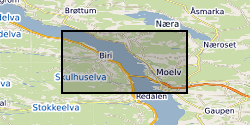
The dataset documents microfossils (acanthomorphic acritarchs) and sedimentary structures within phosphorite pebbles and interstitial carbonate cements from the Ediacaran Biskopas and Biri formations, Hedmark Group, Norway. Data includes extensive optical microscopy images (~30,000) of the microfossils and structures; SEM-BSE images, EDS elemental map and spot point data of phosphatized and carbonate-hosted microfossils; BSE maps and EDS elemental maps of the sedimentary structures within phosphorite pebbles; sedimentary descriptions and detailed grain size counts for phosphorites; detailed spread sheets recording microfossil size ranges, microfacies distributions, and abundances.
-
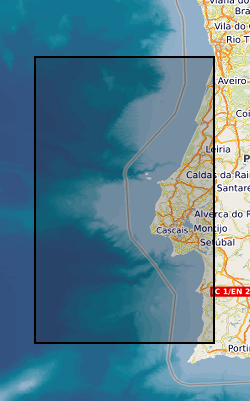
Advances in our understanding of the Earth's climate system will rely on our ability to link high-resolution sedimentary archives from the oceans, ice-cores and terrestrial sequences, and to interpret these records in the context of novel Earth system modeling approaches. Few places exist in the world where sufficiently detailed and unambiguous marine-ice-terrestrial linkages are possible. One challenge for IODP, and the broader drilling community in general, is to identify and recover marine, ice and terrestrial sequences from appropriate locations and with adequate temporal resolution to study processes of the integrated climate system. One such region is the southwest Iberian Margin where it has been demonstrated that the surface oxygen isotopic record could be correlated precisely to temperature variations (i.e., d18O) in Greenland ice cores. By comparison, the benthic d18O signal in the same core resembled the temperature record from Antarctica. Moreover, the narrow continental shelf and proximity of the Tagus River results in the rapid delivery of terrestrial material to the deep-sea environment off Portugal, thereby providing a record of atmospheric changes and permitting correlation of marine and ice core records to European terrestrial sequences. This is the only place in the ocean where such marine-ice-terrestrial correlations have been demonstrated unambiguously. It is therefore highly desirable to extend the Iberian Margin record to encompass the full range of Plio-Pleistocene glacial-interglacial cycles by drilling with the JOIDES Resolution (JR). Towards this end, Proposal 771-Full was submitted to IODP by an international group of 16 proponents led by the UK. The proposal was well received and reviewed by the Science Steering and Evaluation Panel (SSEP), but the IODP Site Survey Panel (SSP) identified major inadequacies in the quality of the seismic data: "The panel raised several concerns on the suitability of the submitted data with regard to its appropriateness, both to image the target properly and with regard to the site location. The panel also discussed the need for 2 high-resolution lines and considered that places where Mass Transport Deposits (MTDs) or closely spaced faults were present deserved these 2 high-resolution lines." This proposal requests 25 days of ship time to collect the necessary seismic and sediment data needed to meet the SSP requirements and recommendations. Several "stand-alone" scientific objectives are also proposed related to the modern hydrography and sedimentary processes on the southwest Iberian Margin, and calibration of palaeoceanographic proxies used for reconstructing past changes in deep-water circulation. This value-added science will make effective use of ship time and contribute key information needed to interpret the downcore records to be obtained by IODP.
-
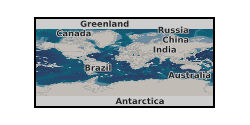
This data contains the results of numerical simulations described in the following two papers: Alisic L., Rhebergen S., Rudge J.F., Katz R.F., Wells G.N. Torsion of a cylinder of partially molten rock with a spherical inclusion: theory and simulation (2016) Geochem. Geophys. Geosyst.16 doi:10.1002/2015GC006061 Alisic L., Rudge J.F., Katz R.F., Wells G.N., Rhebergen S. Compaction around a rigid, circular inclusion in partially molten rock (2014) J. Geophys. Res. Solid Earth 119:5903-5920 doi:10.1002/2013JB010906
-
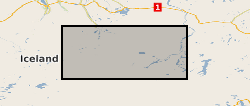
This is continuous raw data from 3-component broad-band (30 sec to 100 Hz) Guralp 6TD seismometer deployments around Askja in the central region of Iceland.
-
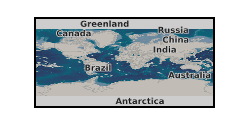
High precision electron-probe analysis of olivine compositions from a set of ocean island basalts. Accompanied by thin section scans and QEMSCAN (Quantitative Evaluation of Minerals by SCANning) compositional maps.
-
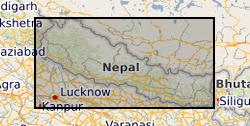
Cation, anion and Sr isotope data from Nepalese river water. Suspended sediment concentration, suspended sediment chemistry presented as wt% oxides from Nepalese rivers. Both the waters and sediments were collected following the 2015 earthquakes.
 BGS Data Catalogue
BGS Data Catalogue